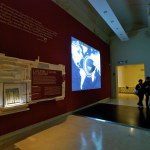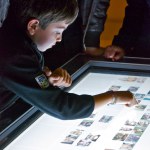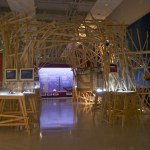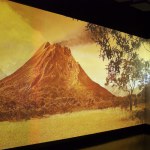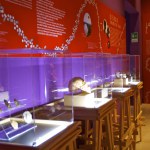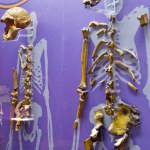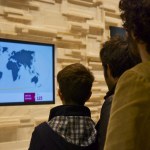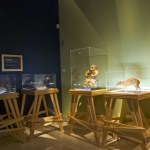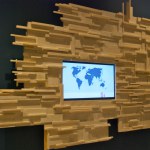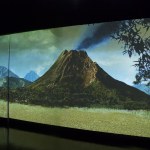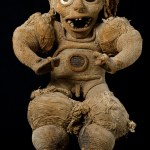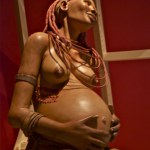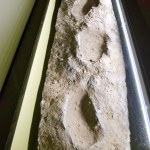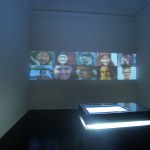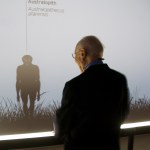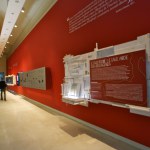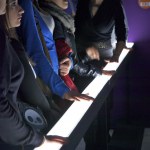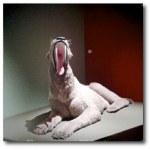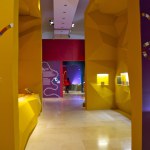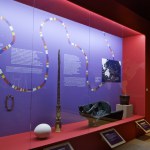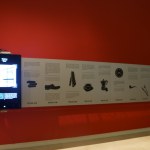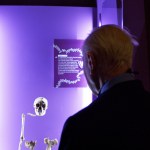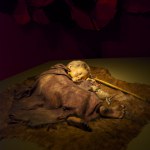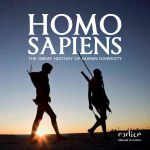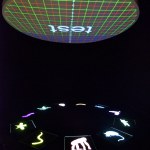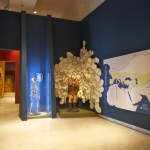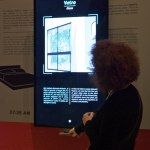EXTRA, the marketplace for scientific touring exhibitions.
For the first time an international team of scientists has started to tie up the loose ends of the ancient history that led our species out of a tiny Ethiopian valley less than 200.000 years ago, for reasons as yet mostly unknown, to colonize the whole planet and spread out in a wide range of different populations and cultures. The research behind the exhibition HOMO SAPIENS makes it a new challenge and an innovation in the field of science communication: researchers from around the world and from very different disciplines – such as genetics, linguistics, anthropology, paleoanthropology, climatology – have established a systematic cooperation project to reconstruct the origins and pathways of human settlement.
EXHIBITION SECTIONS:
1. THE ROOTS Strange large-size primates get out of Africa and colonize the Old world. That is how the genus Homo started, less than two million years ago. what is the hallmark of this new form of Homininae? The brain expansion? The use of stone tools? Certainly, but what distinguishes most these new forms is the acquisition of a complete bipedal locomotion, an emancipation from a still partly arboreal lifestyle. when we started to become human, we started to wander in open spaces and to roam the prairies, across valleys and isthmus, looking for something over the hill. why?
2. THE GENETIC TREE OF HUMANITY The Old world was already crowded with species of the genus Homo that had come out from Africa earlier. Homo sapiens walked out of Africa perhaps several times in successive waves, moving from region to region, where they met their older cousins, with whom they have for long shared the same territories, until - in recent times and perhaps as a result of demographic competition for resources - we were the only representative of our genus left on Earth.
3. GENES, POPULATIONS AND LANGUAGES we are putting together the mosaic of the peopling of Homo sapiens on Earth and with that we see that the genetic, linguistic and anthropological diversity of humanity takes shape. In the first European sites of Cro-Magnon we see the first signs of a deep cognitive and behavioral change, apparently very quickly, that scholars have called “paleolithic revolution.” Due to interactions between converging evidence from different disciplines - such as population genetics, archeology and linguistics - it is now possible to reconstruct the family tree of diversification of the peoples on Earth: the global history of human diversity.
4. THE CONqUEST OF THE PLANET The invention of agriculture and the domestication of plants and animals enter in the Earth system a set of human practices that make ecosystems produce far more than what would be natural. Human population, with the first urban civilization, began to grow at an unprecedented rate, triggering new expansions, migrations, hybridizations, and new conflicts, even genocide. The last stretches of isolated lands are colonized.
5. UNITY IN DIVERSITY Human diversity is not ascribed to any biological nor cognitive principle, but is the consequence of several fortuitous, still on-going, histories. The subject of unity within diversity can be interpreted according to different levels, from primary emotions to languages, from physical features to cultures. From those unsteady steps in the Laetoli tuff, 3,75 millions of years ago, to that other human walk that opened a new frontier, the one on the moon, we have come a long way.
HIGHLIGHTS: • fascinating and immersive ambience; • engaging interactive digital exhibits, educational videos, mechanical hands-on exhibits; • original specimens (archaeological objects, fossils, anthropological and ethnographic artifacts); • reconstructions (models of hominids and animals, scenic landscapes); • lots of charts, atlases, maps (also projected on walls and in touch screen) designed by De Agostini Libri publisher.

